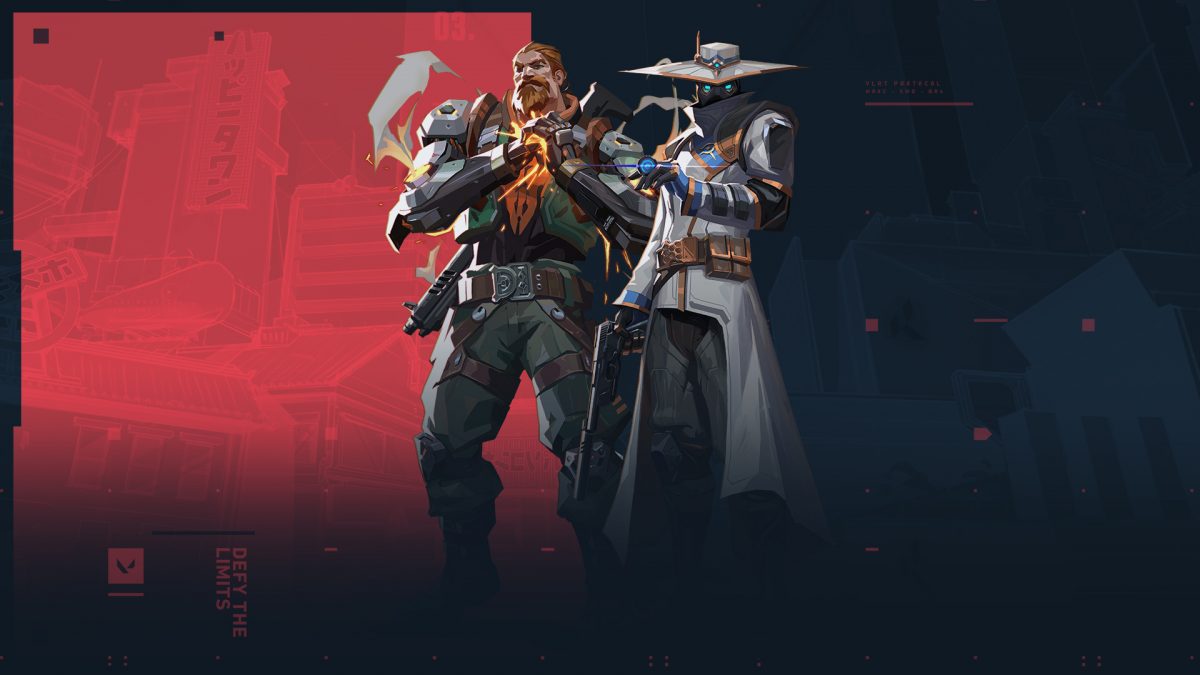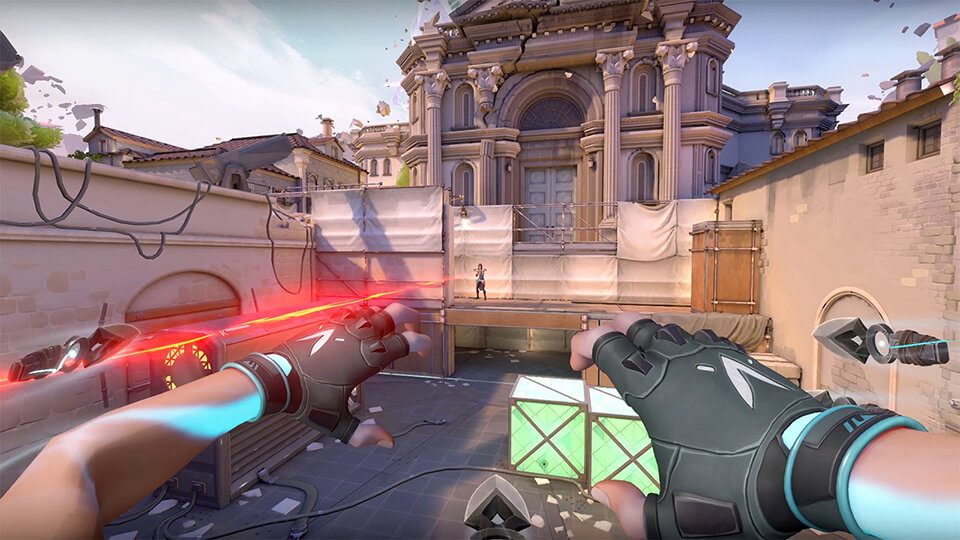Darina Goldin, the Director of Data Science at Bayes Esports writes for Esports Insider to discuss Riot Games’ new hot commodity, VALORANT. In the feature, Goldin breaks down the game’s key markets and need-to-know data when it comes to providing customers with betting offerings.

Easily one of the most anticipated games of 2020, Riot Games’ VALORANT is a tactical first-person-shooter. Like Counter Strike: Global Offensive (CS:GO), the game is five versus five and played in rounds. In each round one of the teams has to detonate ‘the spike’ at one of several sites, while the other team must defend.
Just like in CS:GO, players earn money during rounds that they can use to buy equipment for the next round. Aesthetically, however, the game is closer to shooters like Valve’s Team Fortress 2 and Blizzard’s Overwatch — everything is lighter, friendlier, and less realistic. VALORANT lands somewhere between CS:GO — reliant mostly on great aim — and Overwatch — a game built around its characters’ abilities.
All in all, it seems this is an esports title that fans will want to bet on soon. To be prepared for when the VALORANT competitive scene truly takes off, now is a good time to secure data deals and think about possible betting markets.
RELATED: Riot Games unveils VALORANT Champions Tour for 2021 season
VALORANT’S main markets
Any bookmaker will want to offer at least the main markets: map winner, match winner and map handicap, preferably live. However, it seems unwise to offer the current round winner for live betting as rounds last less than two minutes each.
Unlike CS:GO, players can already move on the map during the initial buying phase, making the time to first engagement significantly shorter. Even if you could create a perfect model, in many cases the odds would change so quickly that the punter would not have enough time to bet. It would be better to offer the ‘who will win the next round’ market live while the current round is being played out.
VALORANT is largely an economy-based game, meaning that players earn money for actions in the game and use it to buy weapons and abilities. Similar to CS:GO the economy meta-game is based around full-, half- and eco-buys, where an eco-buy is almost a guaranteed round loss (players are forced to use cheaper, less effective weapons). With this in mind, guessing the next round’s winner becomes a calculation of how much money each team has available, and how much they decide to spend.

Moreover, each agent has an ‘Ultimate’ ability that has to be earned by completing objectives in the game. These deal damage, provide information, enhance movement, or resurrect a downed teammate. On average, a player will be able to use their Ultimate ability one to three times per half. This is a big difference to Overwatch — less Ultimate availability emphasises gunplay and in theory should make the game easier to predict. Another key difference is that the enemy’s progress towards their Ultimate ability is known, making their use more predictable for both sides.
Ultimate abilities do not cost money and are worthless until unlocked, plus they are highly situational once they become available. It will likely be important to know if an agent’s ultimate is ready, and to predict if it will be ready in the next round, too. For now, it may be best to treat each Ultimate ability as another weapon and add a certain amount to the player’s equipment value once the Ultimate is available. What that value is will be a degree of freedom in the model.
[primis_video widget=”5183″]
RELATED: Riot Games details VALORANT First Strike North America Qualifiers format
So, in order to offer the basic markets you need to know the current round and map standings and the economy of the teams, perhaps including Ultimate status. Furthermore, for pre-match, odds statistics will be paramount. Like any esports title or sport these require good estimates about team skills. On top of the obvious skill advantage, there is a side advantage to consider as well. Traditionally, defenders have it easier in attack/defend games, and maps are often built to offset this. Knowing which map favours which side will be crucial so that bookmakers are not be surprised by spectacular comebacks in the second half of the game.
What about side markets?
Just like in CS:GO, some good round-level side markets are ‘first blood’ (which side scores the first kill), ‘spike plant’, and ‘spike defuse’. Just like the round winner, these markets should be offered for the next round due to VALORANT’s fast-pace. Since the teams switch sides after 12 rounds and all in-game advantages are wiped, odds for round 13 can be offered at any time.
Moreover, an ‘ace’ market looks interesting for VALORANT on a map basis. An ace happens if a player takes out all five opposing players by themself in one round. In CS:GO it happens roughly every five maps and depends greatly on team play-styles and skill difference. In VALORANT, on top of the classical ace, there is also a ‘team ace’, which is when each player of the team kills exactly one opposing player. Offering an over/under market on team aces might be a fun side-market once we know more about competitive mechanics and tactics. For both of these markets exact kill data would be necessary; not only how many players are alive, but information on who killed whom makes it possible to close the market.
With VALORANT markets, let’s start simple
The more complex the models become, the more detailed information you will need. Agent positions become important in situations where you need to judge if they can still reach a spike to defuse it. Intel on the enemy will make or break the game. Ultimate-ability timing, individual strategies and strengths — these are factors that could in time be part of a betting model, but perhaps shouldn’t yet.
RELATED: ESL to run VALORANT esports in Thailand in 2021
This is because the game is still quite new and changing quickly. Riot is balancing the game’s ‘agents’ (VALORANT’s usable characters) that are too weak or strong. They are also likely to introduce new agents and maps in the future. Historically, in-game patches change the value of playable characters in competitive gaming a lot. This is something that is normal in MOBA games like League of Legends but is a lot rarer in shooters. It remains to be seen if, for instance, a fixed pool of agents that is considered best emerges over time — as has happened in Team Fortress 2 — and whether Riot will do something to offset this.

Patches are the bane of betting models, and we can expect significant patches to happen a lot as the title matures. Combined with the small amount of high-level data, it is pivotal to create models that rely less on the agent selection and properties and more on the current game state. Perhaps initial models should be based on team economy, in-round events and round standings and consist of only the main markets.
As the mastermind behind League of Legends, Riot has a proven track record of catering to the competitive scene of titles. If the game takes off as anticipated, we can expect a well-organised professional league system. The first major VALORANT tournaments have already been announced, and as the game gains popularity and stability, more key features can be added, and more side markets explored.
[maxbutton id=”11″ ]
